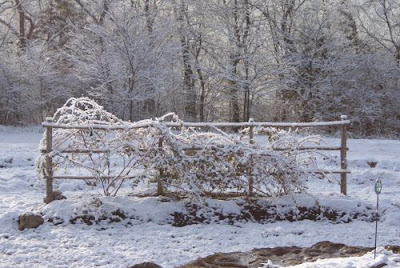This happened a couple of days ago. White stuff fell overnight, disguising the brown winter shades. By late afternoon the above-freezing temperature and intermittent sun had wiped it all away, except for a few shaded patches.
The next day I was out weeding and turning compost.
Tonight we'll huddle deep in our warmth against an overnight low in the mid-teens Fahrenheit. We'll have a few days of that, with one day not even breaking the freezing mark for the high.
On Monday it might be almost springlike, with a high in the 50s.
Ah, this fickle weather.
I had hoped to keep a few things going in the garden... kale, lettuce, cabbage, radicchio... but the extra cold forced me to bring it all in. In times past, the teens waited until December, but we can no longer count on what used to be considered "normal." (Pssst. It's climate change.)
Yet, I will persevere and adapt however I can. It's all I can do. As climate change surges ahead, adaptability will mean the difference between some success and total failure.
I have not preached on climate change, but I am very aware that it is here. I want you all to be aware, as well... not terrified, that has no value, but aware. We can do something.
I suggest checking out the Cool Block program. It was designed for urban communities, but we and some of our neighbors have been trying to adapt it to the rural setting. Our biggest challenge has been that most of us have already done a lot to decrease our carbon footprint, so the program seems a bit redundant. However, we have found value in the stronger sense of community we have developed among us. And we are adapting the curriculum to suit our particular group and circumstances. The part on emergency preparedness has been quite valuable.
This program would be more valuable to people who have only dabbled with reducing their carbon footprint. Yet, the emergency preparedness part and community building can be valuable to anyone. It is missing info on climate activism, but maybe you can find other sources for that. And now that we have federal tax incentives for installing solar power and other energy-saving measures, we can do more.
Go in peace, friends. Keep smiling, keep going, keep hoping... most of all, keep gardening.









